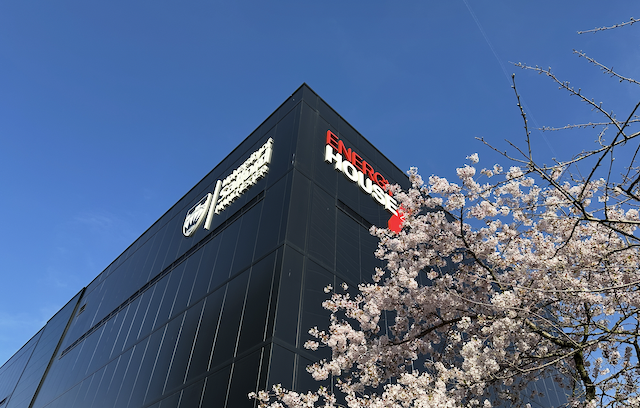As a result of an excellent roundtable with BRE, the Department for Energy Security and Net Zero, and infrared heating industry leaders, Ian and Matt were privileged to go into one of the UK’s most state-of-the-art research centres on sustainable housing at Energy House 2.0 at the University of Salford.
If you don’t know about it, Energy House 2.0 is no ordinary lab. It’s a state-of-the-art climate-controlled test facility that can simulate weather from around the globe. From sweltering hot heat to freezing bone-cold winters. It’s not just testing ideas; it’s stress-testing the actual technologies and systems that will shape the future of low-carbon homes.
Walking Into the Cold—Literally
Being in a test room at -19.7ºC (-3.5ºF) wearing just a jumper was enlightening (and not to be recommended). That immediate hit of the cold did have an effect. Under circumstances as severe, insulation, heating equipment, and building envelope performance isn’t an academic concern, it’s crucial.
And that is exactly why Energy House 2.0 is significant. It is about hard evidence from real-world conditions. We like to talk technologies at an abstract level in efficiency levels, carbon reduction, upfront cost. But seeing how they work when put to the test under extreme conditions brings an increased level of understanding and imperative to decarbonisation .
Key Takeaways from the Day
- Dynamic performance matters – Static laboratory tests or computer simulations only tell half the story. We need to know how systems behave and perform when conditions change rapidly. In reality, that’s what homes go through day in, day out.
- Testing in real life de-risks innovation – Manufacturers and developers can test assertions, uncover weaknesses, and hone solutions in the facility without having to wait years for field trials.
- Collaboration is key – The net zero journey won’t be done alone. Investment, research, and collective industry goals are important to speed up what works.
Turning Insights Into Action
What hit me most is that Energy House 2.0 is not just about the science. It’s about building trust in the products that are being tested. When policymakers, homeowners, and the construction sector can see performance, measure outcomes, and understand data—it gives confidence to invest, adopt, and innovate.
As Ian Sanderson, CEO of NexGen, rightly put it during the visit:
“Energy House 2.0 is not just a test facility, it’s a launchpad for low-carbon innovation. By giving us the tools to prove performance in real-world extremes, it accelerates the journey from concept to scalable solution. This kind of research infrastructure is essential if we’re serious about transforming homes across the UK.”
With the right mix of policy support, industry leadership, and academic excellence, we stand every possibility of heating up our homes, making them healthier, and in fact future-proofing them.
The housing of the future isn’t far off it’s being built now in Salford. And yeah, it’s bloody cold in the test lab. Wear a coat.


